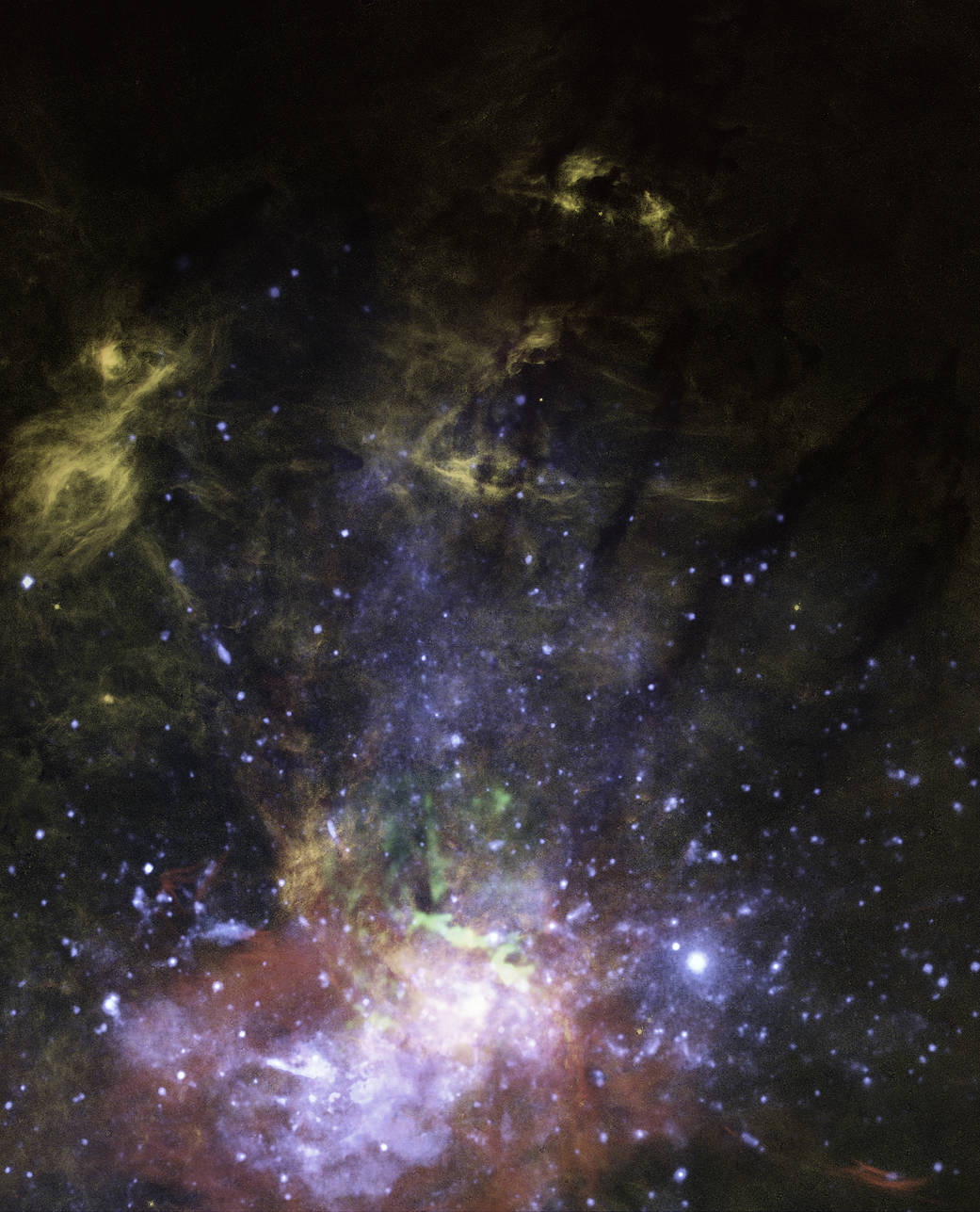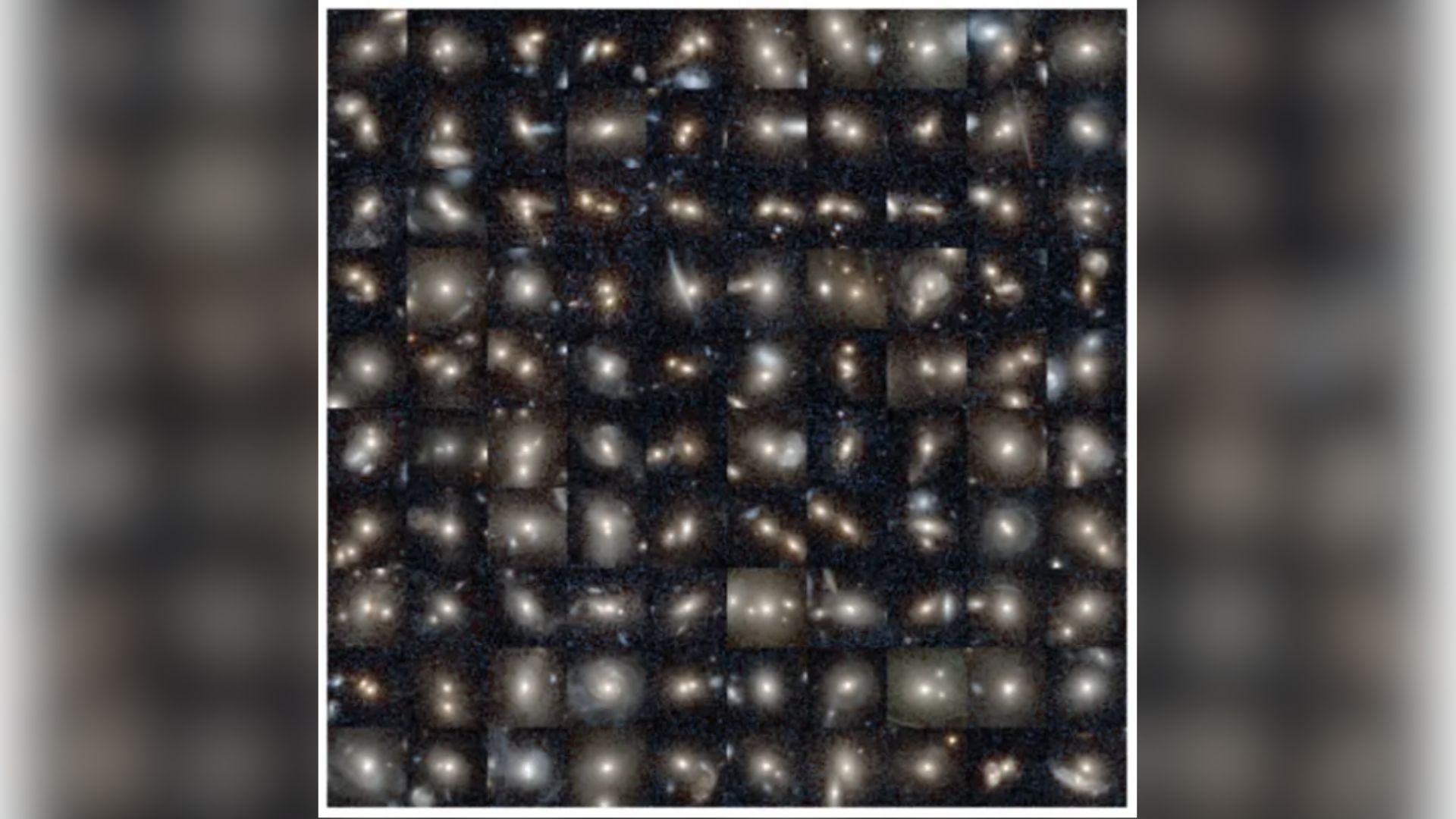The Milky Way's supermassive black hole is leaking gas

The supermassive black hole at the center of our Milky Way galaxy is leaking.
The Milky Way's central black hole, known as Sagittarius A* (Sgr A*), has been "leaking" or emitting jet-like superheated beams for several thousand years. In a composite image captured with the Hubble Space Telescope, researchers have revealed bright X-ray radiation as well as bright clouds of molecular gas and heated ionized gas near the black hole.
Our galaxy's central monster black hole hasn't been directly photographed, nor has its "leaky" jet. But by using observations like the new image, scientists can see the effects of the black hole's "blowtorch-like jet" effects, providing evidence for its existence and how it behaves.
Related: 8 ways we know that black holes really do exist
The composite image shows hydrogen gas as orange-colored features. In interpreting the composite image, the top of this cloud of orange gas, the black hole's jet is seen colliding with the hydrogen gas before scattering upwards into "tendrils," NASA said in a statement. You can also see superheated gas in blue and molecular gas in green, as captured in X-ray observations.
These observations serve as evidence of how the supermassive black hole sometimes swallows up stars and gas clouds then ejects superheated material. It is circumstantial evidence that the jet "is still pushing feebly into a huge hydrogen cloud and then splattering, like the narrow stream from a hose aimed into a pile of sand," NASA officials wrote.
Email Chelsea Gohd at cgohd@space.com or follow her on Twitter @chelsea_gohd. Follow us on Twitter @Spacedotcom and on Facebook.
Breaking space news, the latest updates on rocket launches, skywatching events and more!

Chelsea “Foxanne” Gohd joined Space.com in 2018 and is now a Senior Writer, writing about everything from climate change to planetary science and human spaceflight in both articles and on-camera in videos. With a degree in Public Health and biological sciences, Chelsea has written and worked for institutions including the American Museum of Natural History, Scientific American, Discover Magazine Blog, Astronomy Magazine and Live Science. When not writing, editing or filming something space-y, Chelsea "Foxanne" Gohd is writing music and performing as Foxanne, even launching a song to space in 2021 with Inspiration4. You can follow her on Twitter @chelsea_gohd and @foxannemusic.

